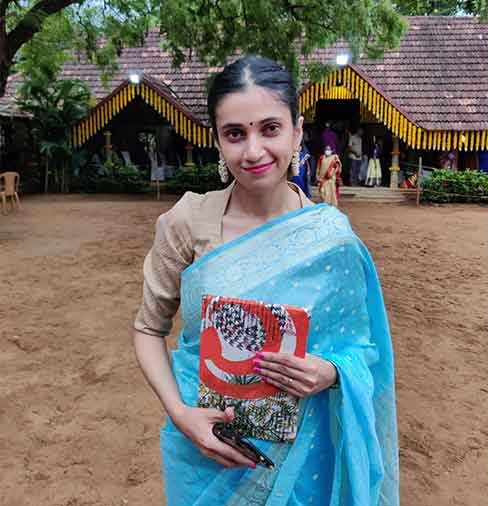ARTIST
Surabhi Banerjee: Architect Turned Illustrator Crafting Nostalgia and Vibrance through Art

When gazing upon the artwork of Surabhi Banerjee, an architect-turned-illustrator, a rush of nostalgia envelops you. The intricate details and vibrant colours that define her creations capture the essence of Bengal’s Durga Bari and Bajaar, as well as the bustling chaos of Mumbai’s Bombay Local. A master of her craft, Banerjee’s work is a testament to her ability to fuse memories, emotions, and artistic expression into captivating illustrations.
Cities as Canvases of Inspiration:
Banerjee’s artistic journey is deeply intertwined with the cities she has called home. Born in Kolkata and subsequently residing in Mumbai, Chennai, and Bengaluru, she has gathered a tapestry of memories that form the foundation of her artwork. “Most of my illustrations have been inspired by the memories I have had in the different cities that I have lived in at various points of my life,” Banerjee shares.
As a child, Banerjee’s fascination with knick-knacks and the eclectic contents of her grandparents’ storeroom set the stage for her artistic sensibilities. Her early years were spent collecting marbles, rocks, and other seemingly mundane objects, all of which now find their way into her illustrations.
The Blossoming of a Passion:
Banerjee’s artistic journey was cultivated through a combination of curiosity and coping mechanisms. Battling anxiety attacks at night, she discovered solace in the works of French comic illustrator Albert Uderzo and Editor Rene Goscinny. Their creations became a beacon of comfort and inspiration, guiding her towards her artistic destiny.
Reflecting on her evolution, Banerjee acknowledges the dual influences of drawing and building. Her architectural endeavours intertwined seamlessly with her artistic pursuits, with each discipline informing and enriching the other. From crayon drawings to constructing intricate structures, Banerjee’s artistic passion found expression through various mediums.
Curating Memories through Art:
Drawing from her rich life experiences, Banerjee’s illustrations capture the essence of nostalgia and sentimentality. Her Kolkata and Bombay drawings evoke a powerful connection to these cities, reflecting the chaos, charm, and cultural nuances unique to each place. Her decision to draw inspiration from these memories proved pivotal, propelling her towards a successful career as an illustrator.
Validation of her talent came when The Hershey Company approached her to design the chocolate bar cover for their Sheroes India campaign. This partnership marked a turning point in Banerjee’s journey, allowing her to explore packaging design and reach a wider audience.
Crafting a Visual Symphony:
Banerjee’s creative process is a symphony of research, narrative formulation, and meticulous execution. She delves deep into the subject matter, capturing the essence of her chosen theme. Using tools like Photoshop and Procreate, she weaves intricate details and vibrant colors to recreate the feeling of exploring an undiscovered antique shop, replete with trinkets and memorabilia.
The result is an awe-inspiring collection that resonates with people’s memories, emotions, and experiences. Banerjee’s artwork is not just a visual feast; it’s an immersive journey that invites viewers to relive the magic of the cities she has lovingly depicted.
A Visionary Blend of Architecture and Art:
Banerjee’s transition from architecture to illustration was a natural progression. While architecture provided her with the foundation of precision and design, illustration granted her the freedom to infuse her creations with fictional elements. The result is an enchanting fusion of two disciplines, where her architectural sensibilities lend a unique perspective to her artistic endeavours.
Banerjee’s collaboration with esteemed brands like Facebook, KFC, Yash Raj Films, and Coca-Cola further solidifies her status as a creative force to be reckoned with. Her ability to transform everyday scenes into mesmerizing works of art showcases her mastery over storytelling through visuals.
Dreams of the Future:
As Banerjee continues to navigate the intersection of architecture and illustration, her dreams remain vivid and aspirational. Her ultimate goal is to see her artwork grace the cover of The New Yorker magazine, a testament to her profound impact on the world of visual storytelling. In Surabhi Banerjee’s creations, nostalgia is not merely a sentiment; it’s a living tapestry woven from memories, emotions, and vibrant colours. Her journey from architect to illustrator exemplifies the transformative power of art and the limitless possibilities that lie within a blan
